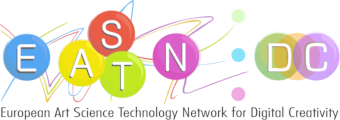SUMMARY: Microverse refers to a poetic and a universe, those of electron microscopy. A transdisciplinary statement that invites us to tear down stereotypes about knowledge. A revaluation of different approaches to understand the world as human as art. Is a scientist an artist? Can artists use methods and tools of science?
Microverse establishes a statement from the inside both science and art, inherits a practice that seems recent but has long standing and is based on the idea that knowledge has no disciplinary barriers and hierarchies, even more that in hybridizations is where fundamental part of humanity pulse occurs.
Born in the form of an exhibition but once made, it becomes concept because it is understood, from the artistic practice and its reflection, that the statements made in “Microverse I: ¿Is the Sistine Chapel a diatom?” extend beyond the exhibition itself, furthermore, to subsequent projects that lead to “Microverse II, Eyes of Science” to be held in 2021.
This concept is based on the affirmation that there is a poetic of science and the objective of this oral presentation is to deepen more specifically in the (uni) verse of electron microscopy. This technique emerges as a natural evolution of optical microscopy. The main difference between the two is that the optics, based on light, limits its magnification capacity to the wavelength of it, while the electron microscopy when using an electron beam allow greater magnification. Thus, electron microscopy is a technique, where the resulting images can be at the same time data: what we see does not tell, what we see IS. Then is unavoidable to think that there is a processual and modular poetics, the same that is pursued by digital/media art.
In the process of making both exhibitions other uses of electron microscopy beyond the analysis itself are evidenced, either because the technique is used for artistic purposes or because initially the function was for analysis, but it exceeds this functionality and crosses borders.
“Microverse I: ¿Is the Sistine Chapel a diatom?” (2016) was conceived as an itinerant exhibition and was shown on three different campuses of University of Applied Sciences of Peru (UPC), accompanied by lectures and guided visits to reach a larger audience. In this exhibition, science, cultural heritage, and art intersect and question each other. A set of micrographs, where the observer eye of the electron microscopy specialist, a scientist, is validated as a landscape photographer. An interdisciplinary heritage project, that uses new media and applied science to revalue one of the Peruvian pre-Hispanic heritage metal collections. And an art project where electron microscopy is a tool and part of the reflection about beliefs.
The way that curatorial and creative work was done gives importance to the process, demystifying artistic, scientific, and curatorial processes to establish links with the community. There are no black boxes, no muses and the artistic work is not only a final product but as Rick Prelinger says is a matrix. An artist, a scientist and an expert technician carry out curatorial and creative tasks. In addition, it is a university, the University of Applied Sciences of Peru (UPC), which receives this first proposal of Microverse. Expanding from the artistic scene to the educational one and standing between borders not only of disciplines but also of institutions.
In 2021, the path is now back from the educational space to the cultural scene, when “UPC Cultural”, virtual cultural space is created, which receives the second exhibition proposal: “Microverso II, Eyes of science”. When COVID-19 pandemic appears, this technique and science in general gain relevance, then the exhibition focuses on the importance of scientific visualization and will be set completely online, this virtual space that we have been forced to inhabit. Works of art/science, bio art, ancestral art that have as a common denominator this relationship of the visualization of science directly or indirectly and the use of electron microscopy.
During the oral presentation, the methodology that will be used is to analyze works of both exhibitions, explaining in each one, how the poetics of electron microscopy is revealed during these processes. A meeting of trajectories from art to science, from science to art, from inside the device and from coral voices of transdisciplinary creation. All of them connected through the revealing power of science, creating from the heart and interior of the technique, through the practice itself and its poetic: The Microverse.
Back
“Reflections: Bridges between Technology and Culture, Physical and Virtual”
is supported by:






